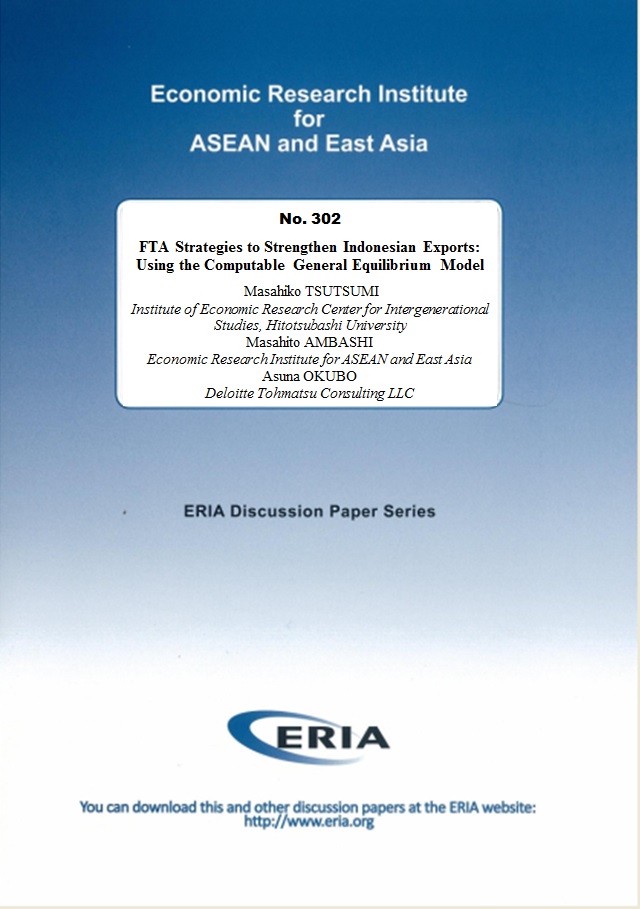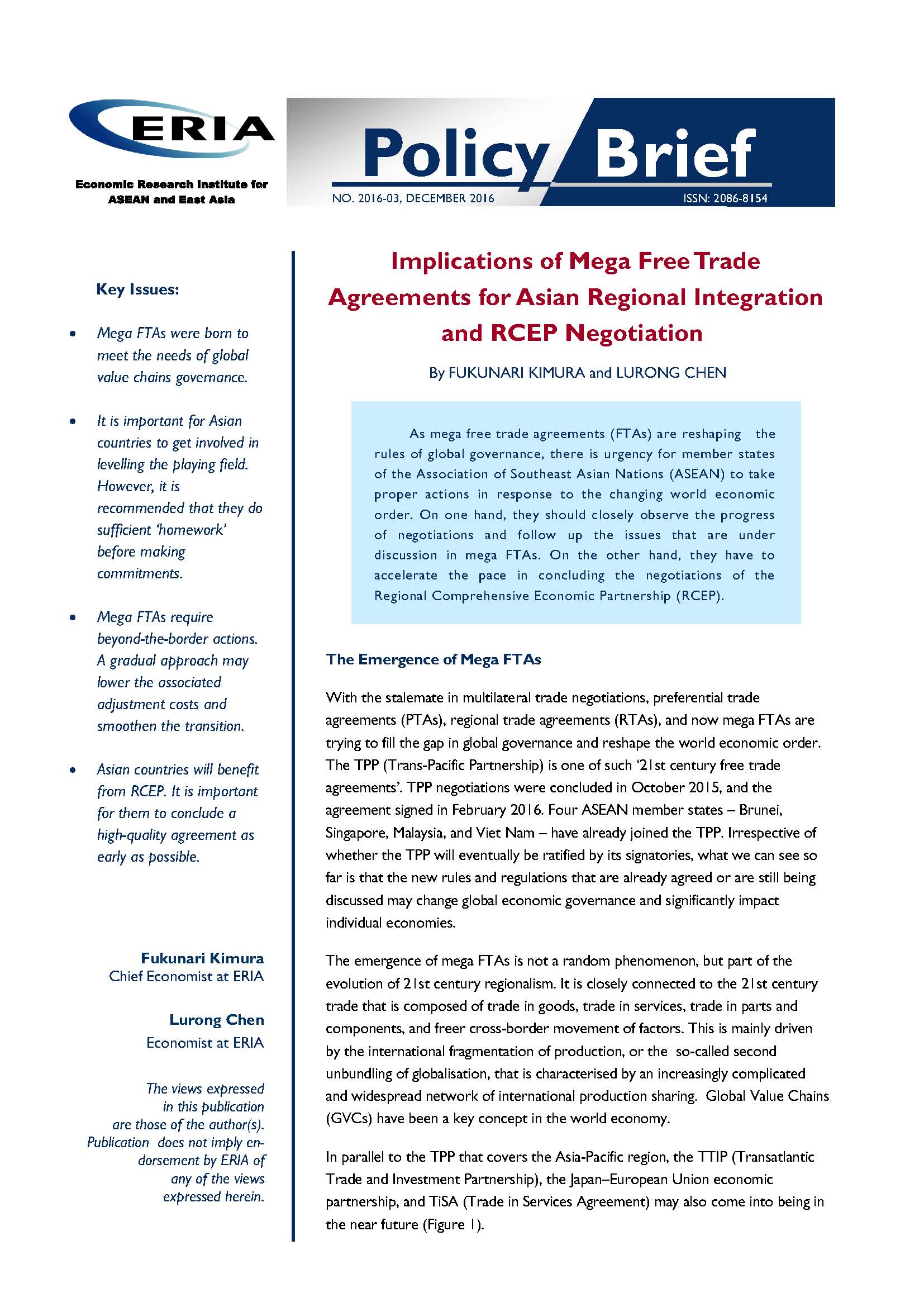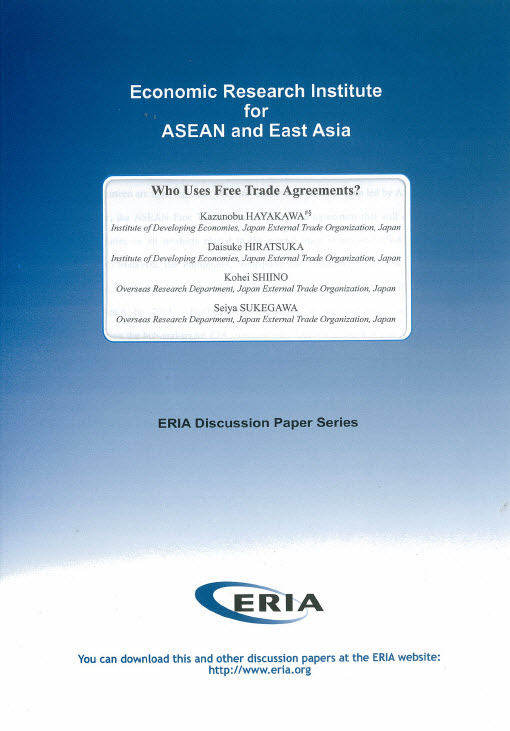FTA Strategies to Strengthen Indonesian Exports: Using the Computable General Equilibrium Model

Date:
11 November 2019Category:
TradeType:
Discussion PapersTags:
Indonesia, tariff, trade policy, computable general equilibrium modelPrint Article:
This paper aims at evaluating the economic impacts of the various Indonesian free trade agreement (FTA) strategies in enhancing export-led growth. The potential impact of abolishing tariffs on three key sectors or commodities – (i) oil seeds, vegetable oils, and fats (VegOil); (ii) fishery and processed foods (FisheryPFD); and (iii) textile and apparel products (TextWapp) – with three trading partners – the European Union (EU28), members of the Gulf Cooperation Council (GCC), and India – is calculated using a computable general equilibrium model. To explore the long-term influence, we also take into account capital deepening and technological spillovers induced by trade.
We derive the following implications from the exercise. First, amongst the three key sectors or commodities, TextWapp generates the largest spillover effects in the economy, as it uses more intermediary inputs. By contrast, although Indonesia has a comparative advantage in VegOil, that sector does not create large spillover effects in the economy. Second, amongst the three trading partners, it would be best to liberalise trade barriers further with the EU28 and India since India would bring gains to Indonesia by correcting a large price distortion in VegOil, while the EU28 would do so through TextWapp as well as VegOil. Since the initial trade volume of the GCC with Indonesia is not large, we might underestimate gains from trade with that region. Finally, the economic merits of abolishing tariffs are generated primarily through improvement of resource allocation in the affected countries. Improved resource allocation generates additional income, which increases imports. Without these income effects, Indonesia can only increase its exports via substitution effects.




